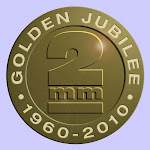I've just put a CT DCX74 chip inside a Farish 04 (the one with the test 2mm wheels discussed earlier). These notes might help others.
1) Fitting. ( Sorry no photos for a while, body back on loco and I don't plan to dismantle for a while). The chip lives in the cab roof with wires to front edge running down into cab, those to motor run along top of bonnet on either side of motor.
Connect one track wire to the bolt+tab which emerges into the cab (the insulated one normally fitted with wire to motor)
The other track wire solder to a new tab which was fitted to the screw in the top of the gear box (also in cab).
Motor wires; one replaced the standard black wire. The other went to the bottom corner of motor where a brass tab normally connects it to chassis. I put some paper with superglue to insulate the brass tab (though could cut it off).
I haven't yet destroyed the capacitors on the motor, I've read mixed comments on whether to do this to chipped locos.
2) Programming.
If using JMRI/DecoderPro, make sure you use the decoder defined in "CT Elektronik/DCX Series (v.26 up) / DCX74D". The definition file used in the "DCX Series (late)" folder has a serious mistake in it, writing to a non-existant CV which then causes all sorts of wierdness !
Must use "Direct Bit" programming mode. Consult your command station / programming tool to find out how to do this (some are automatic, some are not).
CV1 = 7 (I am using short addresses)
CV3 & CV4 = 4
CV5 = 252
CV6 = 64 low speed range to be more controllable
CV29 = 131 ( direction reversed, 128 speed steps and 16khz sampling)
CV50 = 255 (regulation influence, standard value)
CV51 = 20 P-value (much reduced from default)
CV52 = 15 I-value
CV64 = 150 ( cuts top speed, see the Arnold Web Commentary on the Trans/CT decoders)
CV116 = 3 (Half speed (shunt/yard) operates on F3, reverse speed is normal)
Other things which might be useful; CV109 can be set to 1 or 0. This swaps the chip between two complete sets of CV values, so you can fiddle with one set then flip back to another set. Can be handy, but also potential to confuse, so use with care. CV1=0 executes a factory reset on the current CVs (ie one half as set in CV109).
Tuesday, 24 June 2008
Subscribe to:
Post Comments (Atom)

.jpg)
No comments:
Post a Comment